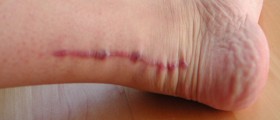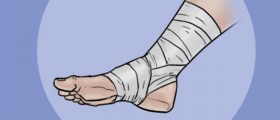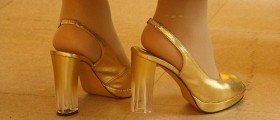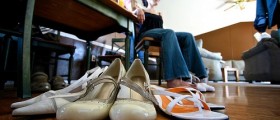
The achilles is the body’s largest and strongest tendon. Also known as the ‘heel cord’, the condition is commonly manifested in athletes - about 18% of serious runners will experience achilles problems at some stage. Problems with the achilles need to be addressed and treated as soon as possible. Otherwise, minor problems can develop into serious conditions such as achilles tendonitis.
Causes
The initial stage of achilles tendon injury is asymptomatic. This stage, known as peritenonitis, might lead to pain, but no outward symptoms will be apparent. During the second stage of the injury, known as tendinosis, some swelling might begin to appear. Additionally, there may be some hard knots of tissue that appear on the back of the leg. Should the feet and legs be exposed to strain at this point, the tendon might rupture, either partially or completely. This is known as Peritenonitis with Tendinosis, and can cause impairment to walking.
Everyday stress on the feet can cause tendonitis, but the condition is more common in athletes. Activities such as basketball, dancing and jogging can increase the risk of achilles tendonitis occurring. Sudden changes in intensity of activity can also cause problems. Some people might also suffer from hereditary, congenital conditions that cause the foot and legs to rotate in an improper fashion. This might cause the feet to flatten, thus increasing stress on the achilles.
If you change your footwear too suddenly, you might experience tendonitis. For instance, those who regularly wear high heels might experience problems after suddenly switching to flat shoes. The unfamiliar stretching pattern this causes can lead to inflammation.Treatment
In order to diagnose achilles tendonitis, a doctor will first need to study the patient’s history. In addition to a standard physical exam, the doctor will normally perform either a Thompson test or an Imaging Test. The former involves the doctor manually examining the patient’s affected leg, while the latter requires the usage of x-ray, MRI or ultrasound in order to display the cause of the problem.
Achilles tendonitis patients will be required to abstain from the activity that caused the injury. Icing the affected area will also be necessary. Additionally, patients should elevate the feet as much as possible, and also apply a compression bandage to the affected area. Stretching and training techniques might be required in those who do not respond well to the RICE treatment. Occasionally, orthotics can be used to control the pain. In some serious cases, surgery might be advised.

















Your thoughts on this
Loading...